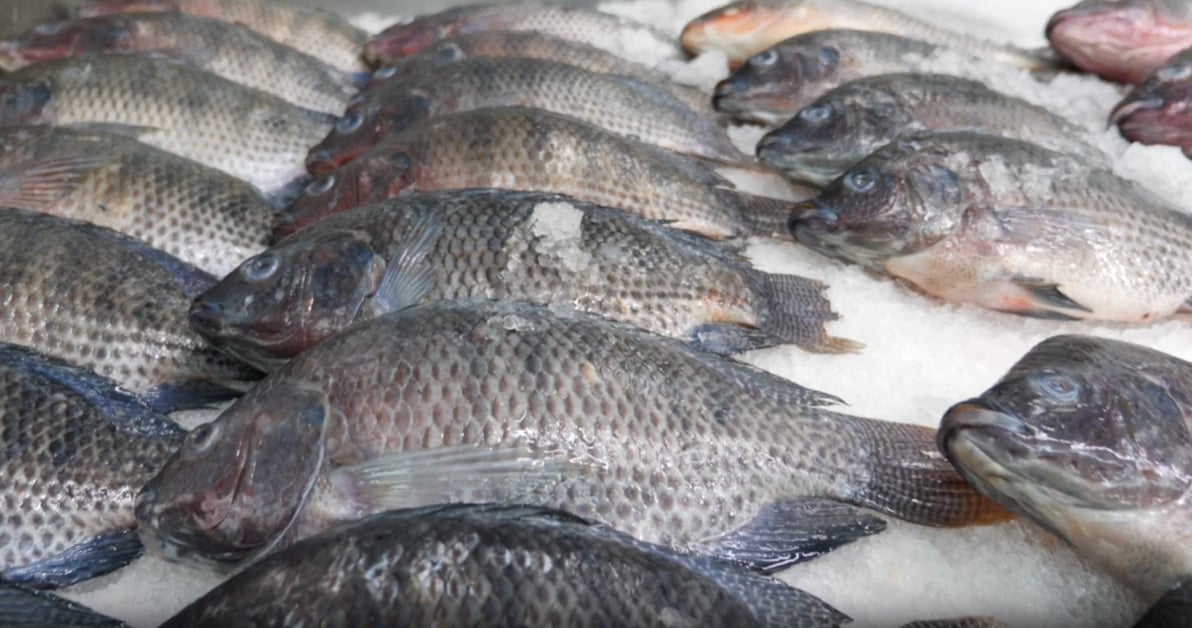November 22, 2025 | 20:48 GMT +7
November 22, 2025 | 20:48 GMT +7
Hotline: 0913.378.918
November 22, 2025 | 20:48 GMT +7
Hotline: 0913.378.918
In addition to key export seafood products such as shrimp and pangasius, tilapia is emerging as a promising product in Vietnam's seafood industry. This is thanks to advantages in farming area, production output, and a network of processing plants dedicated to producing value-added products.
According to the Directorate of Fisheries (Ministry of Agriculture and Environment), between 2015 and 2024, the tilapia farming area increased by 43.8%, currently reaching nearly 43,000 hectares, with a production volume of over 316,000 tons. Notably, export value has also recorded a significant increase - from nearly USD 6.3 million in 2023 to approximately USD 30 million in 2024. As of the end of Q1 2025 alone, this product achieved nearly USD 14 million in export value, up 131% compared to the same period last year.

The current common model is integrated tilapia farming in ponds. Photo: DH.
The U.S. is currently the most important market for Vietnamese tilapia, accounting for 46% of export value. The main products include whole frozen fish, frozen fillets, and other fish meats.
Although there have been positive signals regarding production and exports, at the recent seminar on "Solutions for organizing tilapia production and export in 2025" held in Can Tho City, Mr. Tran Dinh Luan, General Director of the Directorate of Fisheries, raised the issue: “Why hasn’t Vietnamese tilapia been able to develop?”
According to Mr. Luan, in the past, the seafood industry had a plan to make tilapia a key product and national export item, with specific policies and development plans in place. However, in order to achieve this goal, the product must meet many conditions, particularly in terms of economic value. However, at that time, this product had not yet met the required standards.

The Directorate of Fisheries, in cooperation with the Department of Agriculture and Environment of Can Tho City and VASEP, held a meeting to discuss solutions for organizing tilapia production and export in 2025. Photo: Kim Anh.
Currently, in the face of the U.S. countervailing duties, it is predicted that the price of tilapia will decrease in the short term. This is because some countries affected by the new tax policy will shift to other markets, putting pressure on other supply sources, including Vietnam.
Additionally, tilapia is facing a series of challenges, such as stringent environmental requirements, high production costs, a weak supply chain, a lack of certified processing plants, and rising logistics costs.
Mr. Pham Thanh Trung, Deputy General Director of Nong Lam Vina Animal Feed Joint Stock Company, who has experience in tilapia farming, stated that the biggest challenge currently lies in the output stage.
"There needs to be a strong link between the farming ponds and the processing plants to serve export purposes. This is an extremely important factor that ensures farmers can produce with confidence, creates an effective supply chain, and guarantees the fish meet export standards. Currently, companies require the fish to be at least 500 grams each", emphasized Mr. Trung.

According to Mr. Pham Thanh Trung, Deputy General Director of Nong Lam Vina Animal Feed Joint Stock Company, a strong link must be established between the farming ponds and processing plants to serve export purposes. Illustrative image.
On this issue, Mr. Tran Dinh Luan emphasized that without establishing a robust supply chain, it will be impossible to build the Vietnamese tilapia brand.
In recent years, Vietnam has made notable progress by developing high-quality tilapia breeding facilities. Research institutes have also implemented breeding programs and created gene sources to support production, laying the foundation for the industry’s development.
According to the Vietnam Association of Seafood Exporters and Producers (VASEP), global tilapia production in 2024 is expected to reach 7 million tons, with cross-border trade valued at approximately 10.6 billion USD. This figure could rise to 14.5 - 15 billion USD by 2033.
Clearly, there are still many opportunities to expand the tilapia market. However, Mr. Nguyen Hoai Nam, Secretary-General of VASEP, emphasized that clear and strategic direction from state management agencies is crucial, especially regarding local planning for tilapia farming. It is essential to ensure that regions have adequate water surface areas suitable for tilapia farming, helping to optimize production capacity.
Additionally, businesses and industry associations need to take proactive steps in forming strong, effective supply chains. They must focus on the development of a national brand for "Vietnamese tilapia - V-Tilapia". This will help set standards and implement corresponding programs to ensure tilapia’s dominance in the market. Additionally, the potential for tilapia farming in large, underutilized reservoir areas should be leveraged.
“At this point, there is no other option but to establish a strong brand and clear standards to declare. We can no longer continue as we did in the past, doing whatever we want and simply gathering everything to sell. This kind of approach will only result in internal competition, creating confusion, and ultimately tarnishing the image of Vietnamese tilapia in both domestic and international markets", Mr. Tran Dinh Luan emphasized, outlining the necessary direction for the industry.
Translated by Phuong Linh

(VAN) Official Telegram No. 226/CD-TTg, issued on November 21, 2025, mandates enhanced management and utilization of national reserves to support flood response and relief efforts in the Central Region.

(VAN) The Politburo has demanded a high concentration of efforts on urgent relief tasks, ensuring absolute prevention of hunger, cold, and shortages of clean water or medicine among the population.

(VAN) Water resources during the 2025–2026 dry season in the Mekong River Basin basically meet domestic use and production needs, but localized shortages may still occur due to saltwater intrusion.

(VAN) Vietnam and Japan have committed to deepening cooperation on projects under the Joint Crediting Mechanism (JCM), improving waste management, and advancing the circular economy.

(VAN) Digital transformation is becoming a core driver of proactive, precise, and safer management of dams and reservoirs nationwide.

(VAN) This assistance supports people who temporarily relocate or evacuate, as well as communities affected by major storms from late September to now.

(VAN) Viet Nam will host the 8th ASEAN Heritage Parks Conference, bringing together over 320 delegates and reaffirming its role in regional nature conservation.